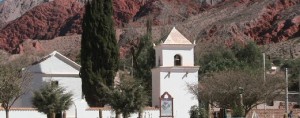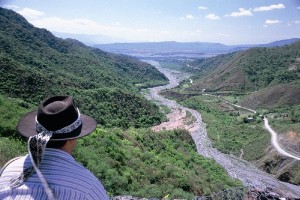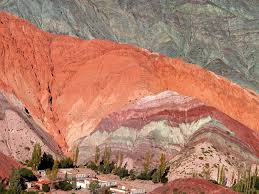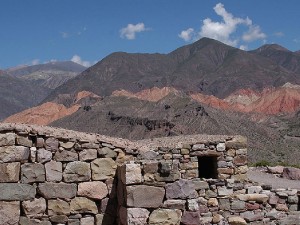 Jujuy , Salta and Tucum??n , an option to travel and discover the wonderful scenery we have in Argentina. To escape the cold shaking , hundreds of tourists take refuge in the beautiful northern landscapes. Jujuy , Salta and Tucuman offer a tour of gorges, valleys and forests which, added to the warmth of its people, we will have an unforgettable stay .
Jujuy , Salta and Tucum??n , an option to travel and discover the wonderful scenery we have in Argentina. To escape the cold shaking , hundreds of tourists take refuge in the beautiful northern landscapes. Jujuy , Salta and Tucuman offer a tour of gorges, valleys and forests which, added to the warmth of its people, we will have an unforgettable stay .
Jujuy
 Jujuy is divided into four regions , by their geographical and cultural features, which give visitors the opportunity to experience four unique and different experiences in one province .
Jujuy is divided into four regions , by their geographical and cultural features, which give visitors the opportunity to experience four unique and different experiences in one province .
First is the Quebrada de Humahuaca , declared World Heritage Site by UNESCO . This land is rich in history and traditions, many of which date back to pre-Columbian times . Those who will enjoy traveling on its colorful festivals , exquisite wines and foods and purchase fabrics made with fine wool flame .
Persist in the important pre-Hispanic customs such as community celebrations where all the people involved : celebrations, misachicos devout worship of the dead , living nativity scenes , Easter as well as the cult of Pachamama.
Secondly , stands La Puna , with its desolate and spectacular scenery reminiscent of the lunar surface and include vast salt flats .
The third region is dominated by the valleys , these places are a constant attraction for the traveler , the lush vegetation and crystal clear river with multiple pools , attract hundreds of people who come to camp and enjoy the lakes and dam.
In this sector , the faithful witness of the historical past of Jujuy, you can visit museums, with testimony and relics of a unique historical and cultural value .
Finally , we find the Yungas forests are high, with a network of trails and courses offered temporary streams penetrate want access to and from the dark paths to experience nature .
Cities to be missed in northwestern Argentina
* Purmamarca
 This small village at the foot of the imposing Cerro de los Siete Colores , is of pre-Hispanic origin and has been declared a National Historic Site. Its picturesque urban layout was done around the main church and its surroundings is installed a fair where local products are offered .
This small village at the foot of the imposing Cerro de los Siete Colores , is of pre-Hispanic origin and has been declared a National Historic Site. Its picturesque urban layout was done around the main church and its surroundings is installed a fair where local products are offered .
In this city you can visit the small council and the Church into which are ornaments and paintings by ancient Indians.
* Tilcara
 It is named after the name of the tribe that inhabited it . Their houses stand out as adobe , earth and straw kneaded . It is a resort tour and in high season, it assumes a role of stay and resort center of national tourism. It also has museums with handicraft centers , restaurants, cafeterias , mechanical service and accommodation facilities to accommodate visitors .
It is named after the name of the tribe that inhabited it . Their houses stand out as adobe , earth and straw kneaded . It is a resort tour and in high season, it assumes a role of stay and resort center of national tourism. It also has museums with handicraft centers , restaurants, cafeterias , mechanical service and accommodation facilities to accommodate visitors .
It is called the Archaeological Capital of the province because it has the Pucara , its main attraction, archaeological site considered as the most important of the ancient peoples of the region .
* Humahuaca
It is the largest and most populous indigenous Quebrada de Humahuaca. Its main feature is the cobbled streets lit by wrought iron lanterns . His appearance evokes Village colonial times , and the walls of many of the houses are made of adobe .
The Regional Folk Museum is a mirror of the traditions and customs of the region, with a sample project where the collection of musical instruments and costumes of the famous Carnival of Humahuaca.

